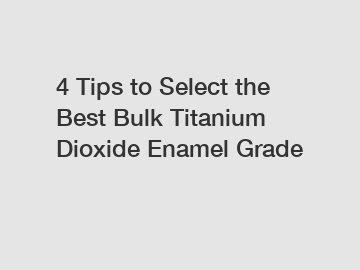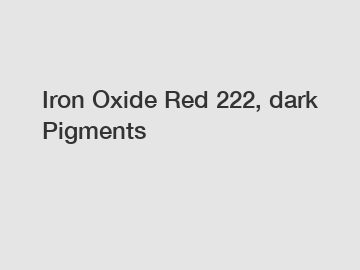Hydroxypropyl Methylcellulose (HPMC) is a widely used additive in various industries, including construction. In gypsum plaster, HPMC serves multiple functions, ranging from improving workability to enhancing the performance of the final product.
If you want to learn more, please visit our website.
Overview of Gypsum Plaster:
Gypsum plaster, also known as plaster of Paris, is a widely utilized building material due to its ease of application, versatility, and fire-resistant properties.
It is commonly used for interior wall and ceiling finishes, creating smooth surfaces suitable for painting or wallpapering.
Introduction to Hydroxypropyl Methylcellulose (HPMC):
HPMC is a cellulose ether derived from natural cellulose, primarily wood pulp or cotton.
It is chemically modified to enhance its properties, including water retention, thickening ability, and adhesion.
HPMC is available in various grades, each tailored to specific applications based on viscosity, particle size, and other parameters.
Properties of HPMC Relevant to Gypsum Plaster:
a. Water Retention: HPMC improves the water retention capacity of gypsum plaster, prolonging the hydration process and enhancing workability.
b. Thickening: HPMC acts as a thickener, preventing sedimentation and improving the consistency of the plaster mix.
c. Adhesion: HPMC enhances the adhesion of gypsum plaster to various substrates, ensuring better bonding and reducing the risk of delamination.
d. Air Entrainment: HPMC facilitates air entrainment, leading to improved workability and reduced cracking in the plaster.
Applications of HPMC in Gypsum Plaster:
a. Basecoat and Finish Coat Formulations: HPMC is incorporated into both basecoat and finish coat formulations to improve rheological properties and workability.
b. Crack Filling Compounds: In crack filling compounds, HPMC helps maintain consistency and adhesion, ensuring effective repair of surface imperfections.
c. Skim Coat and Leveling Compounds: HPMC contributes to the smoothness and durability of skim coats and leveling compounds, enhancing surface finish.
d. Decorative Plasters: In decorative plasters, HPMC assists in achieving intricate textures and designs while maintaining structural integrity.
Benefits of Using HPMC in Gypsum Plaster:
a. Improved Workability: HPMC enhances the workability of gypsum plaster, allowing for easier application and reduced labor requirements.
b. Enhanced Durability: The addition of HPMC improves the strength and durability of gypsum plaster, reducing the likelihood of cracking and shrinkage.
c. Consistent Performance: HPMC ensures consistent performance of gypsum plaster across different environmental conditions, such as temperature and humidity variations.
d. Versatility: HPMC enables the formulation of gypsum plaster with a wide range of properties, catering to diverse application requirements.
e. Environmental Friendliness: HPMC is biodegradable and environmentally friendly, aligning with sustainable construction practices.
Challenges and Considerations:
a. Compatibility: Proper selection of HPMC grade and dosage is crucial to ensure compatibility with gypsum plaster and other additives.
b. Quality Control: Stringent quality control measures are essential to maintain batch-to-batch consistency and performance reliability.
c. Storage and Handling: HPMC should be stored in dry conditions and handled with care to prevent contamination or degradation.
Hydroxypropyl Methylcellulose (HPMC) plays a vital role in enhancing the properties and performance of gypsum plaster. Its ability to improve workability, adhesion, and durability makes it indispensable in various applications within the construction industry. Understanding the properties and proper application of HPMC is essential for optimizing the performance of gypsum plaster and ensuring the success of construction projects.
henggu jianxin are exported all over the world and different industries with quality first. Our belief is to provide our customers with more and better high value-added products. Let's create a better future together.
Additional resources:HPMC Solubility in Water: Key Insights Explained
Post time: Mar-27-
4 Tips to Select an Effective Electric Cryotherapy UnitHow Does a Full-Body Cryotherapy Machine Work?4 Tips to Select the Best Cryo Chambers for SaleAre Cryo Chambers for Sale Worth the Investment?Key Questions to Consider When Choosing a Blender for Smoothies4 Tips to Select the Perfect TiO2 Powder
HPMC for gypsum plaster
Gypsum is a popular building material known for its excellent properties such as fire resistance and sound insulation. To further enhance its workability, adhesion and performance, experience the ultimate transformation in your gypsum plaster projects with the innovative power of hydroxypropylmethylcellulose (HPMC) additives.
Effect of HPMC on Gypsum
&#;1&#;Improved Workability: HPMC enhances the workability and ease of application of gypsum plaster, allowing it to spread more smoothly and efficiently on a variety of surfaces. Its water-retaining properties prevent rapid drying, allowing contractors to achieve consistent results without compromising quality.
&#;2&#;Enhanced Adhesion: HPMC helps improve the adhesion of gypsum plaster to dissimilar substrates, promoting a strong bond and reducing the risk of delamination or cracking over time. This produces a long-lasting, durable plaster finish.
&#;3&#;Superior Crack Resistance: HPMC-treated plaster is more resistant to cracking, reducing the likelihood of cracks forming due to shrinkage or movement. This is particularly beneficial in areas prone to temperature fluctuations or structural changes.
&#;4&#;OPTIMAL OPEN TIME: HPMC extends the open time of the plaster, giving craftsmen more time to perfect their finishing touches. This increase in machinability means improved aesthetics and a more refined final appearance.
&#;5&#;Controlled Water Retention: The controlled water absorption and release capabilities of HPMC ensure proper curing of the plaster, allowing for even drying and minimizing surface imperfections. This controlled hydration helps create an even, flawless finish.
Applications of HPMC-Infused Gypsum Plaster:
&#;1&#;Interior Masterpieces: Elevate interior spaces with HPMC-treated gypsum plaster that boasts unparalleled smoothness, crack resistance, and durability. From residential havens to commercial marvels, your creations will shine with sophistication.
&#;2&#;Architectural Marvels: Add a touch of grandeur to architectural designs with HPMC-enhanced plaster. Create captivating decorative elements, intricate moldings, and ornate motifs that capture the essence of timeless beauty.
&#;3&#;Ceiling Statements: Craft stunning ceilings that leave a lasting impression. HPMC ensures your gypsum plaster adheres flawlessly to overhead surfaces, minimizing sagging and ensuring a stunning visual impact.
&#;4&#;Restoration Excellence: Restore historical treasures to their former glory with HPMC-modified gypsum plaster. Seamlessly integrate new plaster with existing surfaces, achieving seamless results that honor the past while embracing the future.
If you want to learn more, please visit our website gypsum special grade hpmc.










Comments
All Comments ( 0 )